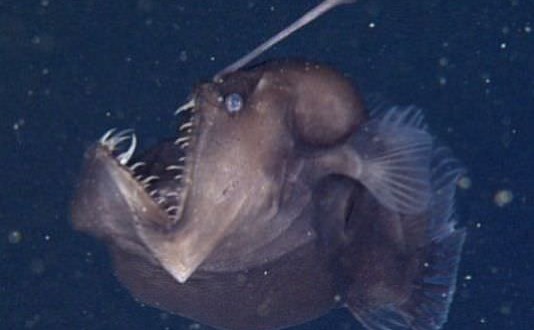Angler Fish First Footage, researchers on a dive off the coast of California have captured the first-ever video of the elusive anglerfish known as the black seadevil.
Monterey Bay Aquarium Research Institute senior scientist Bruce Robison was leading a dive using the remotely operated vehicle “Doc Ricketts” when he came across the elusive and rarely seen fish on November 17.
The female anglerfish, also known as Melanocetus and Black Seadevil, a was found 1,900 feet below the ocean’s surface.
Black Seadevils were featured as villains in the Disney movie, “Finding Nemo,” and some who watched MBARI’s footage described the fish as ugly and freaky.
Robison disagreed.
“Beauty is in the eye of the beholder,” Robison told KSBW on Friday. “I think it’s beautiful. It’s perfectly adapted to the habitat that it lives in and the kind of life it leads.”
Angler fish evolved more than 100 million years ago.
The males are dwarfed in comparison to the females’ body sizes.
And their relationship is one for the books.
“The male bites into the body of the female, their tissues fuse. The males body degenerates until it’s a lump of tissue surrounding testicles,” Robison said.
The female then nourishes the male and will carry him for the rest of her life. Robison has seen as many as 11 males attached to one female.
Fewer than half a dozen of these fish have ever been captured on video in their natural habitat by deep diving research vehicles, and MBARI teams have only seen three in the last 25 years of searching the canyon.
MBARI is located on the shores of Moss Landing, where the ocean floor drops off dramatically. An hour and a half boat ride will get you to where the canyon is a mile deep.
Robison said the fish discovery was thanks to the mid-water rest barometer, the only one of its kind.
“What we’re trying to do experimentally with instruments that we take down into the ocean is to learn what the range of capabilities of these animals are,” he said. “Now that the temperature is rising, many species may not have the ability to adjust to the rising temperatures,” he said.
Agencies/Canadajournal
 Canada Journal – News of the World Articles and videos to bring you the biggest Canadian news stories from across the country every day
Canada Journal – News of the World Articles and videos to bring you the biggest Canadian news stories from across the country every day



